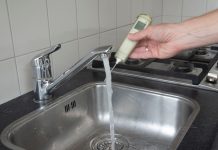Cities are central to both the causes and solutions of the climate crisis. Local governments, through their regulatory and spending powers, hold significant potential to advance climate neutrality. Integrating climate considerations into public procurement can transform it from a procedural necessity into a strategic instrument for mitigation, adaptation, and sustainable urban development
For too long, industries, agriculture, energy systems, resource management, and human activities in general have followed unsustainable practices, thereby exacerbating the climate crisis [1]. The lack of effective action to respond to global warming has not only increased the scale of climate-related events but also made their impacts more severe. The IPCC — the Intergovernmental Panel on Climate Change, the United Nations’ body for assessing the science of climate change — stresses that governments at every administrative level must act quickly to reduce greenhouse gas emissions and to adapt to new climatic phenomena [2].
Cities are at the heart of this challenge. While they are responsible for generating more than 70% of global CO₂ emissions [3], primarily through buildings, transport, and industry, they also present significant opportunities for reducing emissions and establishing inclusive, resilient communities. The IPCC supports this view, pointing out that focusing climate action on cities could trigger large-scale emission cuts while improving quality of life at the same time [2].
Local government role
Local governments, in particular, play a crucial role. Through decisions on land use, urban planning, public works, and management of essential urban services — transport, waste, water, energy, healthcare, education, and emergency response — they hold the power to achieve climate neutrality [4]. This means local authorities are not just regulators but frontline actors putting policies into practice.
Putting policies into practice involves purchasing goods, services, or undertaking public works. When governments need to make expenditures that exceed certain thresholds, they must allocate funds through public procurement processes. These processes are designed to ensure that public money is spent fairly, transparently, and efficiently when public authorities buy from private suppliers.
Public procurement regulation
In Europe, public procurement is regulated by Directive 2014/24/EU, which sets common thresholds: €5.5 million for public works, €143,000 for national level-purchase, and €221,000 for purchase by local and regional governments [5]. Similar rules exist elsewhere, such as the UK’s Public Procurement Act 2023, the US Federal Acquisition Regulation, and many other international examples.
Data show that, on average, almost 30% of total public spending (about 12.7% of GDP) goes through procurement, and this share is steadily growing [6]. The largest areas of spending are in key urban sectors, most affected by climate change: health, the environment, infrastructure, transport, communication, and energy. Since local governments mostly deliver these services, a significant portion of procurement takes place at the subnational level.
Climate-related clauses into procurement processes
This means that local government procurement could be a strategic tool for local climate action if climate requirements were added to the principles of fairness, transparency, and efficiency.
By incorporating climate-related clauses into procurement processes – such as mandatory screening criteria, exclusion clauses and contractual terms – governments could ensure that the goods, works and services they purchase do not exacerbate global warming, and could even contribute to achieving climate neutrality in cities. This approach would create a “virtuous cycle,” boosting demand for sustainable products and driving innovation in the market [7].
Green Public Procurement
Despite its great potential, public procurement is not yet widely recognised and regarded as a strategic instrument for fostering climate sustainability in cities. Experimental experiences in this direction yielded guidelines that were both voluntary and difficult to apply. The European Commission’s Communication “Public Procurement for a Better Environment”, for example, defines Green Public Procurement (GPP) as the process through which public authorities award works, goods, and services with lower environmental impacts over their life cycle compared to alternatives [8] and provides voluntary criteria for a number of types of goods. GPP is part of a wider strategy that also covers socially responsible and innovation-focused procurement.
However, most efforts so far focus exclusively on cutting greenhouse gas emissions, leaving aside the equally important issue of adaptation. In the absence of criteria for assessing how the purchased works, goods, and services could strengthen resilience, opportunities to leverage procurement for preparing for unavoidable climate impacts are often missed.
Shifting towards the integration of adaptation considerations to complement mitigation would require the mainstreaming of climate information that is tailored to local specificities (climate services) into all stages of public procurement processes, alongside new regulatory instruments.
Climate services should indeed constitute the knowledge basis for the redaction of experimental climate-related requirements, screening criteria, award and exclusion criteria, and contractual terms in public procurement.
![Figure 1: Adapted from Bernardini et al. (2025) [7].](https://www.openaccessgovernment.org/wp-content/uploads/2025/10/Screenshot-2025-10-20-124923.png)
Climaborough project
As a scientific partner of the EU-funded Climaborough project, GERICS is collaborating with 15 European partner cities – including Turin, Grenoble, Sofia, Cascais, and Differdange, among others – and leading the co-design and development of climate services tailored to a specific city’s needs: climate-proofing public procurement processes to acquire solutions that promote climate neutrality.
To date (as of 21 September 2025), two rounds of innovative climate-proofed public procurement have been successfully conducted within the Climaborough project, and climate neutrality solutions are currently undergoing experimentation. The main urban domains addressed by the acquired solutions are waste management and energy provision. Innovative tools for gathering data on textile waste reduction and recycling, smart bins, sensor networks for monitoring environmental parameters, and gaming apps for engaging stakeholders in reducing energy consumption are some examples of the purchased solutions.
Further development and experimentation are urgently needed to enable climate-proofing in public procurement through the design of innovative methods, criteria, and tools, thus exploiting its potential as a strategic instrument for achieving climate goals.
References
[1] United Nations Environment Programme (UNEP). Emissions Gap Report 2024. https://www.unep.org/resources/emissions-gap-report-2024 (2024).
[2] Intergovernmental Panel on Climate Change (IPCC). Climate Change 2023: Synthesis Report. Contribution of Working Groups I, II and III to the Sixth Assessment Report of the Intergovernmental Panel on Climate Change. Core Writing Team: Lee, V., Masson-Delmotte, V., Zhai, P., Pirani, A., Connors, S.L., Péan, C., Berger, S., et al. IPCC, Geneva, Switzerland. Available at: https://www.ipcc.ch/report/ar6/syr/ (2023).
[3] World Meteorological Organization (WMO). State of the Global Climate report. Chrome-extension://efaidnbmnnnibpcajpcglclefindmkaj/https://library.wmo.int/viewer/69075/download?file=State-Climate-2024-Update-COP29_en.pdf&type=pdf&navigator=1 (2024).
[4] Bernardini, C. Climate Change and Human Systems: Innovative Adaptation Services as a Soft-Resilience Strategy to Tackle Emerging Risks. SpringerBriefs in Applied Sciences and Technology. https://doi.org/10.1007/978-3-031-57169-5 (2024).
[5] European Parliament & Council of the European Union. Directive 2014/24/EU of the European Parliament and of the Council of 26 February 2014 on public procurement and repealing Directive 2004/18/EC (Text with EEA relevance). Official Journal of the European Union, L94, 65–242. Available at: https://eur-lex.europa.eu/legal-content/EN/TXT/?uri=CELEX%3A32014L0024 (2014).
[6] Organisation for Economic Co-operation and Development (OECD). Fair Market Conditions for Competitiveness in the Adriatic Region. Policy Briefing Note. The OECD Public Procurement Principles. Green Public Procurement: Catalysing the Net-Zero Economy. chromeextension://efaidnbmnnnibpcajpcglclefindmkaj/https://www.oecd.org/south-east europe/programme/OECD-Public-Procurement-Policy-Briefing-Note.pdf (2023).
[7] Bernardini, C. et al. Climate proofing of public procurement: a gap to be filled. npj Climate Action 4 (2). https://doi.org/10.1038/s44168-024-00207-0 (2025).
[8] European Commission. Public procurement for a better environment. Communication from the Commission to the European Parliament, the Council, the European Economic and Social Committee, and the Committee of the Regions. COM(2008) 400 final. Brussels, 16 July 2008. Accompanied by SEC(2008) 2124, SEC(2008) 2125, and SEC(2008) 2126. Available at: eur-lex.europa.eu (2008).
Horizon 2020 Project: European Union Horizon Europe program, Climaborough Project, under grant agreement ID:101096464.








